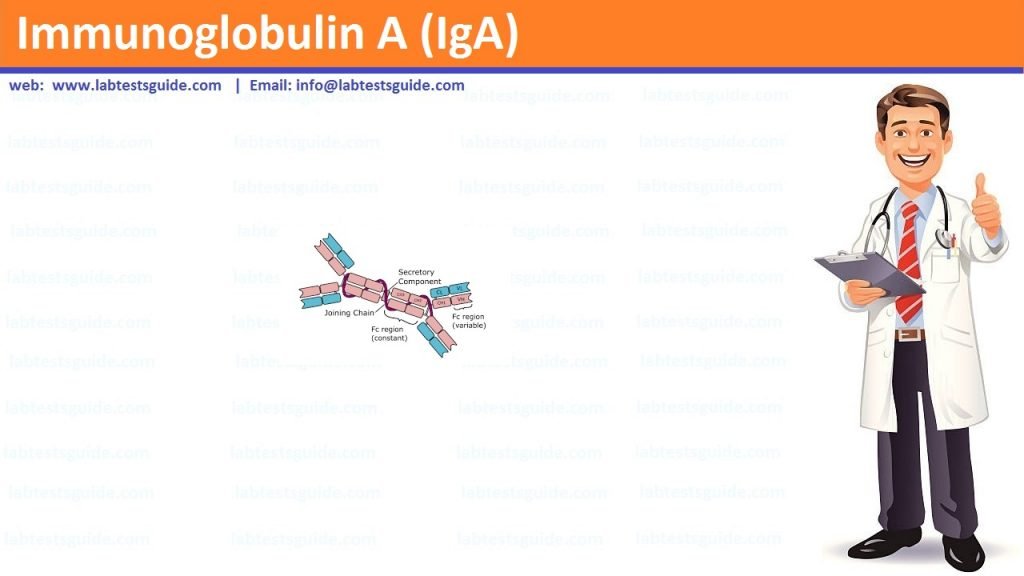One of the five classes of immunoglobulins; one of the most common immunoglobulins, it is mainly present in body secretions and is the chief antibody in the mucous membranes of the gastrointestinal and respiratory tract and in saliva and tears.
Immunoglobulin A (IgA), which is found in high concentrations in the mucous membranes, particularly those lining the respiratory passages and gastrointestinal tract, as well as in saliva and tears.

Sample
- The patient’s serum is needed for estimation of IgA.
- The random sample can be taken.
- Analyzed a fresh sample or store at 4 °C for less than 72 hours. Stable for 6 months at -20 °C.
- Avoid lipemic or hemolyzed serum.
Factors influencing the result:
- Drugs which will increase the values are:
- Hydralazine.
- Phenytoin.
- Isoniazid (INH).
- Procainamide.
- Tetanus toxin and toxoid.
- Therapeutic gamma globulins.
- It is present in the secretions like saliva, GI tract, respiratory system, and tears.
- IgA is present in small amount in the blood.
- 10 to 15 % of the Ig is IgA.
- IgA exists as a monomer form and dimer form.
- IgA migrates in the beta-gamma region.
- IgA one form is called as secretory IgA found in tears, saliva, sweat, milk and colostrum, GI tract and bronchi.
- IgA is mainly formed by the plasma cells of GI tract, bronchi. and breast ductules of lactating mother.
- IgA activates complement by alternative path.
- IgA concentration:
- Serum = 0.5 to 5 mg/mL.
- Milk = 3 to 7 mg/mL.
- Colostrum = 9.5 to 10 mg/mL.
Functions of IgA
- IgA antibody main function is to protect the mucosa which is exposed to various antigens.
- It can activate complement by alternative pathways.
- It is effective opsonin.
- The secretory IgA consists of two 4- chain basic unit (dimeric form), joined by the J-chain.
- Deficiency of IgA leads to infection of the gastrointestinal and respiratory system.
- It has antiviral activity.
- Its major role is the protection of bacteria, viruses, and protozoal infection by preventing their attachment and colonization to the mucosa.
Normal Value:
- Adult = 85 to 385 mg/dL
- Children = 1 to 350 mg/dL
The increased level is seen in:
- Multiple Myeloma
- Cirrhosis of liver
- Systemic lupus erythematosus
- Rheumatoid arthritis
- Sarcoidosis
- Wiskott-Aldrich syndrome
The decreased level is seen in:
- Hereditary telangiectasia
- Type 111 dysgammaglobulinemia
- Malabsorption in some cases
- Occasional cases of Cirrhosis of liver
- Occasional cases of SLE
- Occasional cases of Still’s disease
- Occasional cases of recurrent otitis media
- In Agammaglobulinemia
- Hereditary thymic aplasia
Possible References Used




